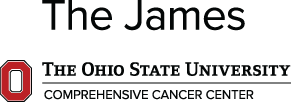- Advertise
- About OncLive
- Editorial Board
- MJH Life Sciences brands
- Contact Us
- Privacy
- Terms & Conditions
- Do Not Sell My Information
2 Clarke Drive
Suite 100
Cranbury, NJ 08512
© 2025 MJH Life Sciences™ and OncLive - Clinical Oncology News, Cancer Expert Insights. All rights reserved.
Dr Gatti-Mays on Updated Biomarker Data From the NeoPACT Study in TNBC
Margaret E. Gatti-Mays, MD, MPH, FACP, discusses updated biomarker data from the phase 2 NeoPACT trial of neoadjuvant chemoimmunotherapy in triple-negative breast cancer.
Margaret E. Gatti-Mays, MD, MPH, FACP, section chief, Breast Medical Oncology, associate professor, Division of Medical Oncology, Department of Internal Medicine, The Ohio State University Comprehensive Cancer Center–James, discusses updated biomarker data from the phase 2 NeoPACT trial (NCT03639948) of neoadjuvant chemoimmunotherapy in triple-negative breast cancer (TNBC).
The phase 2, single-arm NeoPACT trial investigated the efficacy of an anthracycline-free regimen of docetaxel and carboplatin combined with pembrolizumab (Keytruda) for patients with stage I, II, or III TNBC, Gatti-Mays begins. The regimen was administered once every 3 weeks for a total of 6 cycles, she details. The study enrolled 120 patients, and 111 were deemed evaluable for a pathologic complete response (pCR). Patients were required to have tumors 1 cm or larger, or positive lymph nodes, Gatti-Mays notes.
Results showed that docetaxel and carboplatin plus pembrolizumab produced a pCR of approximately 58% in the overall population, Gatti-Mays reports. In patients who were node-negative, the pCR was slightly higher at 65%. Moreover, patients with PD-L1 positivity displayed the highest pCR rate of 76%, Gatti-Mays states. The regimen also produced a 2-year disease-free survival (DFS) rate of 89% when evaluating all patients, Gatti-Mays details. In patients who achieved a pCR, the 2-year DFS rate was 98%. After treatment, patients with residual disease achieved a favorable 2-year DFS rate of 78%, Gatti-Mays remarks.
Findings from a subsequent biomarker analysis of NeoPACT were presented at the 2023 ASCO Annual Meeting, Gatti-Mays continues. The analysis delved into specific proliferation signatures and various biomarkers of gene expression, and investigated their ability to predict responses with the neoadjuvant chemoimmunotherapy regimen, she says. Patients in this study were classified as having either low or high stromal tumor-infiltrating lymphocyte (sTIL) levels.
The analysis suggested that these factors could aid in predicting which patients would derive substantial benefits from the chemoimmunotherapy regimen, Gatti-Mays explains. Notably, this prediction holds true even for patients who have sTIL-low TNBC. This discovery contradicts the conventional understanding that higher sTIL levels correlate with better responses with neoadjuvant treatment in breast cancer, Gatti-Mays says.
Proliferation signatures could therefore serve as a predictive tool for identifying patients who may benefit from chemoimmunotherapy, especially in cases with lower sTIL levels, Gatti-Mays emphasizes.
Ultimately, the NeoPACT study not only sheds light on the encouraging efficacy of neoadjuvant chemoimmunotherapy for TNBC, but potentially introduces a more tailored approach to treatment using specific molecular signatures to identify optimal patient populations, Gatti-Mays concludes.


